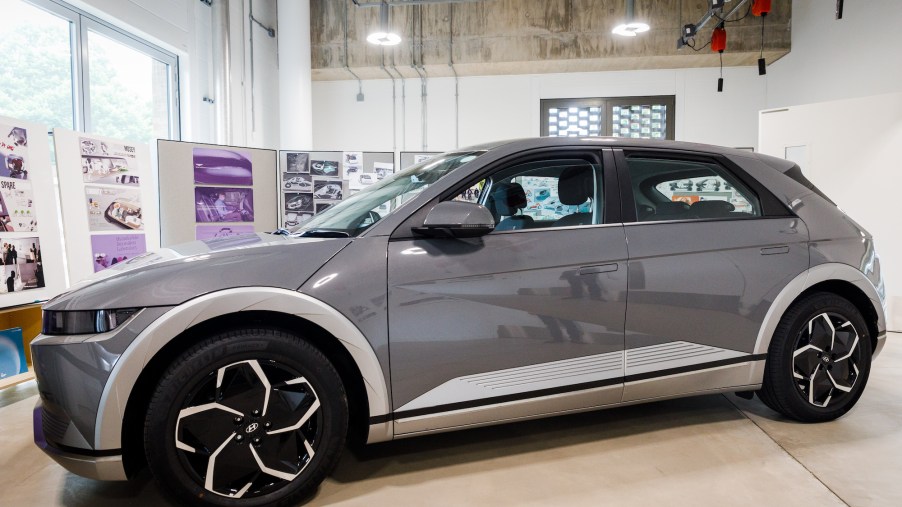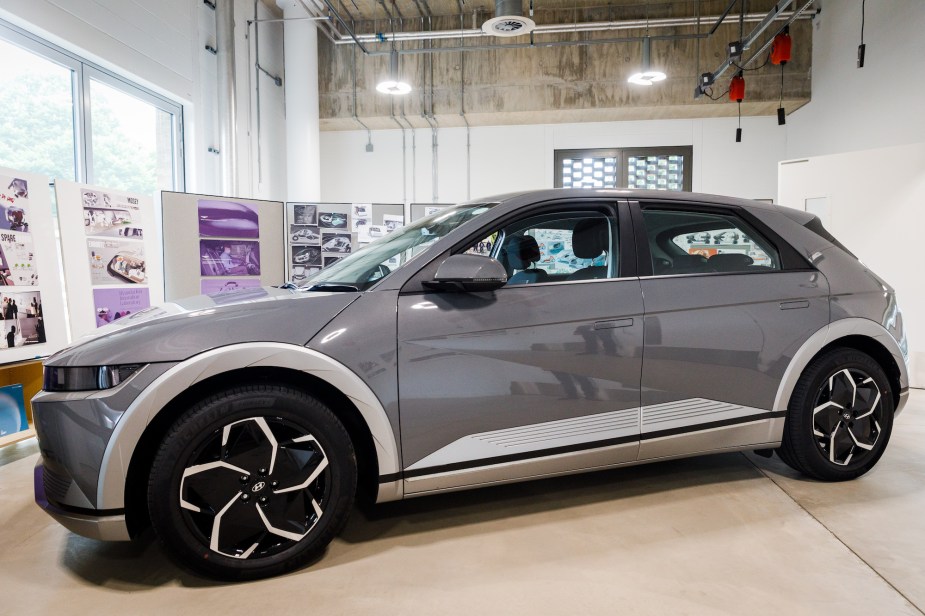
4 Ways Hyundai Improved EVs: Comparing the Dull Kona Electric to Better Built Ioniq 5
Hyundai has broken into the EV market and making a lot of headway. Between its affordable prices, modern designs, and careful consideration of consumers’ wants, they have shown they’re ready to compete with the best. The Ioniq 5 shines in a segment that is becoming a little crowded.
The Ioniq 6 and Ioniq 9, which are on the way, also promise more great things. However, a quick look back through Hyundai’s history proves that its EV designs weren’t always so well received despite all the glowing critic reviews.
1. The Ioniq 5 has a unique design

In many cases, it’s easy to go with a previously designed model and update it. This means you don’t have to do some of the hard work, like deciding where the engine will be placed or whether it will be AWD or 4WD.
Going from a gasoline-powered vehicle to an electric one makes things incredibly difficult. However, Hyundai discovered this difficulty with the Kona Electric. It made sense to go with the current model, but when it came to building it, Hyundai had to make some difficult decisions. This resulted in a rather lackluster Kona Electric, which reviewers weren’t pleased with.
When Hyundai designed the Ioniq 5, it decided to go with something new rather than trying to build off the bare bones of a gasoline-powered vehicle. This allowed the Korean automaker to make more natural decisions. The results are far superior to the Kona Electric.
2. Superior charging times
One of the sticking points for electric vehicles is the charging time. Most people spend a total of five minutes at the gas station pumping, and this includes going inside to pay for it. With electric vehicles, it’s not uncommon to find vehicles that take up to 10 hours to charge. When you’re sitting at home, that’s not a big deal. However, road trips are a different matter altogether.
Edmunds reports that the 2022 Hyundai Ioniq 5 takes 8.5 hours to charge. The Hyundai Kona EV takes a full hour longer at 9.5 hours, according to another Edmunds report.
3. The Ioniq 5 has more space
Who doesn’t love more cargo space? You can bring along more of the things you love, and your loved ones on the taller side don’t have to argue over who gets crammed in the back.
That’s one of the problems which plagued the Hyundai Kona and carried over into the Kona Electric. It had a mere 19.2 cu-ft with the seats up and could increase to 45.8 cu-ft with the seats lowered. However, that wasn’t always possible.
Hyundai noted this and increased the cargo space with the seats up to 27.2 cu-ft. With the seats down, this increases to 60.2 cu-ft.
4. The Ioniq 5 has more features
The Ioniq 5 is a new offering and has more to offer consumers than the Kona Electric. For example, there is one-pedal driving, V2L functionality, auto-touch door handles, and all-wheel drive. Suppose that’s not enough to tempt you. In that case, there are plenty of driving features, such as forward collision warning, lane departure warning, blind spot warning, AEB highway speed capability, adaptive cruise control, and rear cross-traffic alert warning. All of these features come standard, so you don’t have to worry about figuring out how to get extra cash for the features you desire.
On the other hand, the Kona Electric is rather bare, especially for the base trim. Features such as AEB highway speed capability and adaptive cruise control, which are standard on the Ioniq 5, are only optional on the Kona Electric.
Why you should consider the Kona Electric
Despite its flaws, the Kona Electric stands out over the Ioniq 5 in several areas. The first is the price.
The Kona Electric starts at $34,000, while the Ioniq 5 has a starting price of $39,950. This may not be a considerable price difference for some, but for many consumers, this is an excellent reason to walk away from the Ioniq 5.
The other is superior MPGe. The Ioniq 5 is rated at 114 MPGe, while the Kona electric gets 120 MPGe. That’s not much, but given all the advantages the Ioniq 5 has, every little bit helps.


